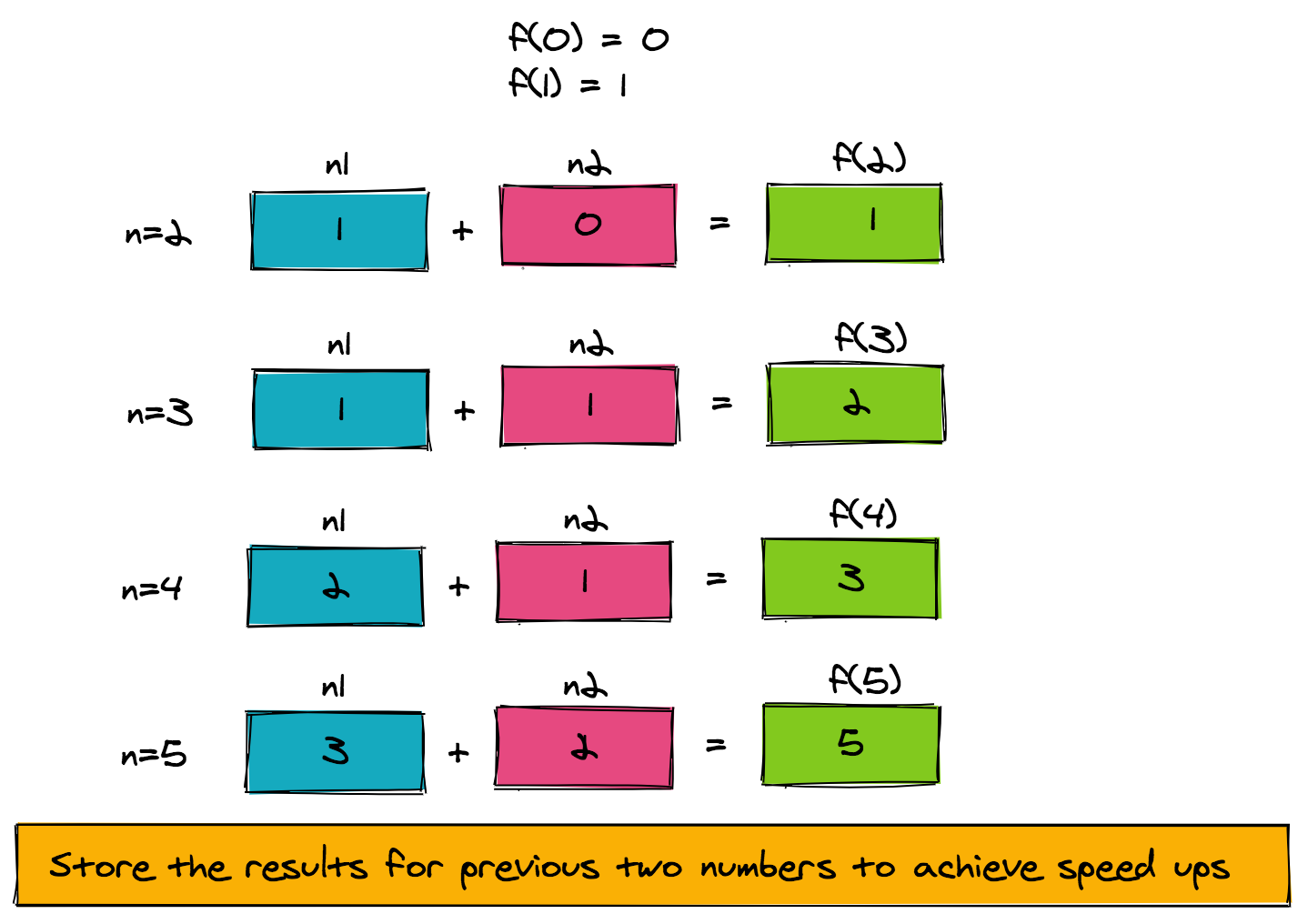Memoization of Fibonacci Numbers: From Exponential Time Complexity to Linear Time Complexity
To speed things up, let's look at the structure of the problem. f(n) is computed from f(n-1) and f(n-2). As such, we only need to store the intermediate result of the function computed for the previous two numbers. The pseudo-code to achieve this is provided here.
The figure below shows how the pseudo-code is working for f(5). Notice how a very simple memoization technique that uses two extra memory slots has reduced our time complexity from exponential to linear (O(n)).

SNIPPET
1Routine: fibonacciFast
2Input: n
3Output: Fibonacci number at the nth place
4Intermediate storage: n1, n2 to store f(n-1) and f(n-2) respectively
5
61. if (n==0) return 0
72. if (n==1) return 1
83. n1 = 1
94. n2 = 0
105. for 2 .. n
11 a. result = n1+n2 // gives f(n)
12 b. n2 = n1 // set up f(n-2) for next number
13 c. n1 = result // set up f(n-1) for next number
146. return resultxxxxxxxxxx15
function fibonacciFast(n) { if (n === 0) return 0; if (n === 1) return 1; let n1 = 1; let n2 = 0; let result = 0; for (let i = 2; i <= n; i++){ result = n1 + n2; // gives f(n) n2 = n1; // set up f(n-2) for next number n1 = result; // set up f(n-1) for next number } return result;}console.log(fibonacciFast(10));OUTPUT
:001 > Cmd/Ctrl-Enter to run, Cmd/Ctrl-/ to comment


